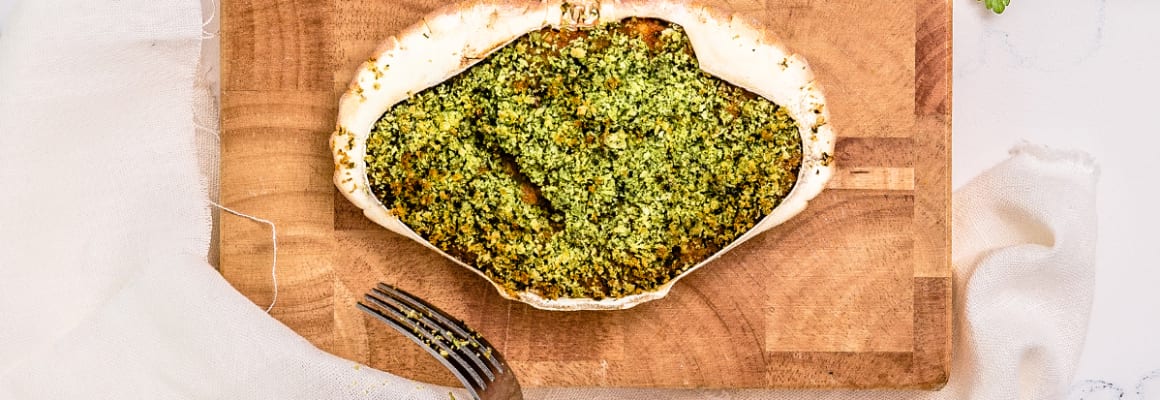As we handle live crab on a daily basis, we tend to forget that many people have no idea how to handle them. This page is intended to be a brief guide for the uninitiated.
Our crab is caught (in season) off the rough grounds of the north coast of Cornwall where they live in the clean Atlantic Ocean water. The boats which supply Fish for Thought select the prime fish for us and store them at sea until we need them. A small number are brought ashore for temporary storage in our tank to ensure a continuous supply if the weather is bad. We then cook them as required for customers each day. Live crab is increasingly being sent away or sold over the counter, as freshness is then guaranteed. Check out our post on sustainable crabs.
Storage
Live brown crabs can stay alive for three to four days if they are kept cold and damp, ideally in the bottom if your fridge covered with a damp cloth. Do not put into fresh water. They need regular checking, so that if they die, they can be cooked immediately. There is no need to panic; when cooked they can be treated as most other cooked food and stored in the coldest part of the fridge for up to four days.
Spider crabs are a little more tricky as they sometimes seem to die for no apparent reason and we would not suggest storing them alive. However, cooked the same rule as with brown crab applies.
Cooking
We always kill our crabs before cooking for the following reasons
- The method used is kindest to the fish and it causes no suffering
- If you put a crab straight into boiling water, it will shed its legs and claws and it does suffer
- Not killing the crab makes the meat tough and retains too much water in the shell
Our philosophy on cooking seafood
While it is true that fish in general probably suffer more pain in their natural environment - being eaten alive for example - our view is that humans don't need to add to it. There is research in progress to find a way of stunning crabs, but in the meantime the following guidelines should be used:
Killing a crab is very easy. First turn it onto its back with its legs upward.
Underneath, towards the back of the shell, you will see a small pointed flap. Lift this flap and you will find a small hole in the shell. Using a small screwdriver pierce down through this hole, with a sharp tap on the top of the screwdriver, until you feel it hit the other side of the shell. Move the handle of the screwdriver sharply towards the back of the shell then withdraw it. Finally turn the crab right side up and allow it to drain.
An alternative method sometimes used is to put them in fresh water and leave them for about thirty minutes, by which time they should have drowned. However, we really don't recommend this method and it is not one we use here at Fish for Thought.
Cooking the Crab is the easy bit
- Using the largest saucepan/fish kettle you have, half fill with fresh water and add plenty of salt. We use half a cup to a gallon of water (150g to 4.5 litres) and bring to a vigorous boil
- Drop the crab in and bring back to the boil
- When the water comes back to the boil, start timing. We use 20 mins for crabs up to 2lb and add 5 mins per pound over that
- When the time is up, carefully pour the whole lot into your sink and wash off the crab with fresh water to remove any surplus protein
- Allow time to cool, then follow the preparation instructions below
Twist off the claws and legs and put aside. To remove the centre part, hold the crab with the head pointing upwards and knock the bottom edge on a chopping board. Lay the crab dark side down with the head pointing forwards and use the thumbs to push the centre up and out of the shell.
Discard the small stomach sac situated just behind the crab's mouth. Pull away the soft gills which are attached along the edges of the centre part and discard. Cut the centre part into four and with a skewer remove the flesh.
Using a teaspoon, scoop out the brown meat from inside the shell. Open the claws with a sharp knock from a rolling pin and remove the white flesh. Repeat for the legs and use the crab meat as required. Check out our crab linguine recipe for more ways to cook crab.




